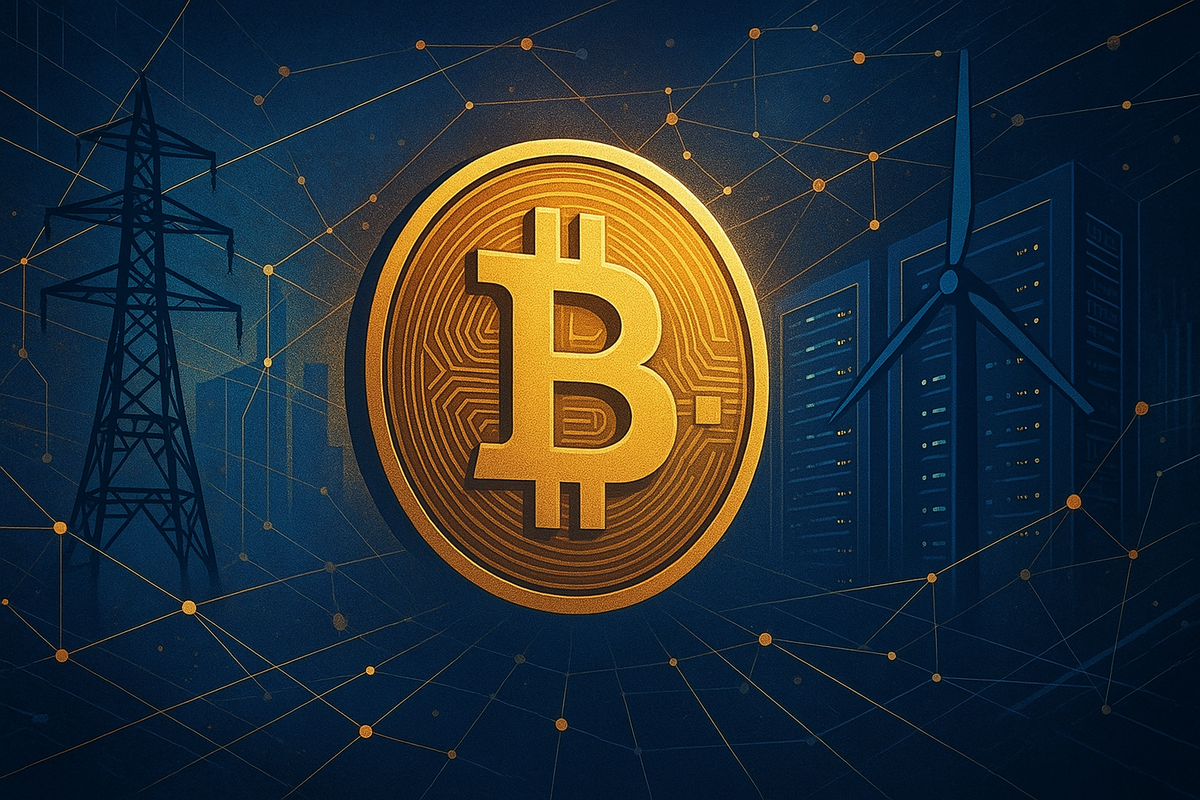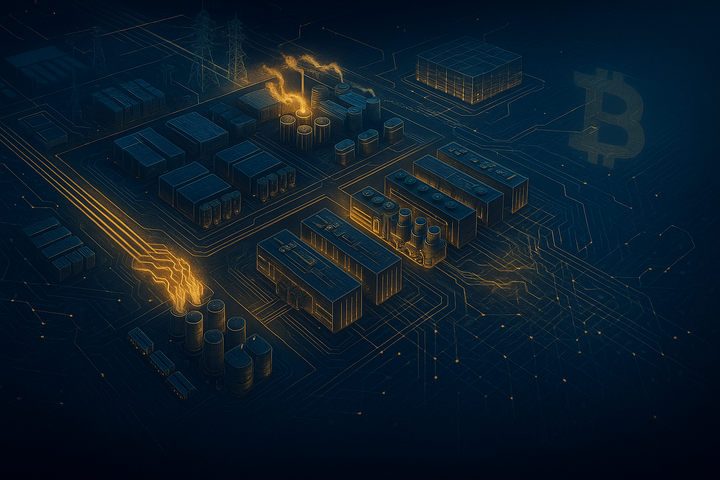AI Capex, Grid Bottlenecks, and Bitcoin’s Hedge Case
The September 30, 2025 episode of Milk Road Macro features Jordi Visser analyzing how AI-driven capital expenditure is reshaping markets and real-economy bottlenecks.

- My 'briefing notes' summarize the content of podcast episodes; they do not reflect my own views.
- They contain (1) a summary of podcast content, (2) potential information gaps, and (3) some speculative views on wider Bitcoin implications.
- Pay attention to broadcast dates (I often summarize older episodes)
- Some episodes I summarize may be sponsored: don't trust, verify, if the information you are looking for is to be used for decision-making.
Summary
The September 30, 2025 episode of Milk Road Macro features Jordi Visser analyzing how AI-driven capital expenditure is reshaping markets and real-economy bottlenecks. Visser links data center build-outs, grid constraints, and supply chain fragility to narrow equity leadership and a difficult labor transition. He frames Bitcoin as a system-level hedge if AI-era replication compresses valuations across leveraged fiat assets.
Take-Home Messages
- AI Capex Engine: Data center build-outs drive GDP while exposing shortages in power, cooling, transformers, and memory.
- Compute Scarcity: Model access remains constrained and costly, reinforcing narrow market leadership and execution risk for late adopters.
- Grid as Bottleneck: Firm capacity and interconnection queues become decisive policy variables for industrial competitiveness.
- Geopolitical Interdependence: U.S.–China resource leverage shapes supply chains, PMIs, and commodity paths despite rivalry.
- Bitcoin Hedge Thesis: If AI replication compresses valuations across leveraged assets, Bitcoin offers a scarcity-based alternative.
Overview
Jordi Visser argues that AI capital expenditure is the primary growth impulse, with data center construction rippling through equipment, cooling, transformers, gas turbines, and memory. He resists the “bubble” label, pointing to concentrated gains amid low broad participation and weak consumer sentiment. In his view, today’s pattern reflects creative destruction rather than a speculative blow-off.
He expects compute and power scarcity to persist as model complexity outpaces infrastructure, keeping access expensive and rationed. Next year’s constraints intensify as remaining grid slack disappears and interconnection timelines extend. Firms that chase speed without durable moats risk obsolescence when input costs and delays bite.
On geopolitics, Visser stresses U.S.–China interdependence in rare earth processing, drones, EVs, and hardware that confers leverage in supply chains. He suggests a mediated accommodation could lift PMIs and commodity demand by stabilizing expectations. Domestic politics and strategic dependencies limit the scope and durability of any rapid détente.
Labor sits at the center of the near-term adjustment as tasks reconfigure faster than training systems adapt. Visser anticipates several challenging years of wage pressure and hiring friction before productivity gains diffuse. He positions Bitcoin as a hedge where AI-enabled replication tests valuations across leveraged fiat assets while energy scarcity disciplines growth.
Stakeholder Perspectives
- Policy Makers: Accelerate siting and permitting for firm capacity while safeguarding competition and labor mobility.
- Utilities and Grid Operators: Prioritize interconnection queues, resource adequacy, and local reliability in data center clusters.
- Hyperscalers and Semiconductors: Lock in long-lead components, diversify suppliers, and justify capex with durable moats beyond raw speed.
- Institutional Investors: Reassess concentration risk, duration exposure, and hedging with assets less correlated to policy-driven cycles.
- Bitcoin Miners and Energy Developers: Pair flexible load with new generation, monetize curtailed energy, and maintain community license to operate.
Implications and Future Outlook
Compute and power scarcity will shape investment pacing, capital costs, and competitive advantage over the next cycle. Regions that streamline firm capacity additions will capture data center clusters and related employment. Delays will entrench narrow market leadership and raise failure risk for capital-light entrants.
If a U.S.–China accommodation materializes, supply chain reliability improves and industrial sentiment lifts, but dependency risks endure. Commodity cycles could re-rate, pulling forward turbine, transformer, and storage orders. Policy will need to balance resilience with cost as reshoring and diversification raise capex intensity.
Bitcoin’s hedge case strengthens when investors expect AI-driven replication to compress valuations across leveraged assets. Scarcity tied to energy and time preferences becomes a portfolio counterweight to policy-sensitive instruments. Execution will determine who benefits, as energy procurement, siting, and balance-sheet discipline separate winners from overbuilders.
Some Key Information Gaps
- How fast can U.S. utilities add firm capacity dedicated to AI data centers without crowding out other loads? Timelines and tradeoffs determine industrial competitiveness and grid stability.
- Where are the longest lead-time components in the AI supply chain, and how can firms diversify them? Mapping bottlenecks enables targeted contracts, inventory, and substitution strategies.
- What conditions would enable a U.S.–China “mediation” bargain, and how durable would it be? Scenario clarity informs risk premia for PMIs, commodities, and cross-border capex.
- What near-term reskilling paths align with tasks least vulnerable to end-to-end automation? Practical training routes can reduce wage pressure and hiring friction during transition years.
- Under what scenarios does AI-driven replication compress valuations across leveraged fiat assets, and how does Bitcoin function as a hedge? Portfolio design depends on identifying triggers and correlation regimes.
Broader Implications for Bitcoin
Energy-Constrained Digital Expansion
AI’s growth trajectory collides with physical energy limits, elevating resource adequacy to a strategic variable for national competitiveness. Jurisdictions that align permitting, firm capacity, and flexible load integration will attract durable digital-industrial bases. Bitcoin’s load flexibility can complement new generation by monetizing off-peak and stranded energy while reinforcing grid economics.
Industrial Policy Rewired by Scarcity
Persistent bottlenecks in turbines, transformers, and advanced components will push governments toward targeted industrial capacity building. Public–private procurement models and strategic stockpiles may re-emerge as tools to smooth bullwhip effects. Bitcoin’s neutrality across borders offers firms a settlement and treasury option less exposed to policy-induced currency volatility.
Labor Market Architecture for Automation Eras
Task reconfiguration outpaces traditional training cycles, requiring modular credentials and employer-linked curricula. Policy will shift from static occupations to capability stacks that adapt with model upgrades. Bitcoin-denominated compensation experiments may appear in high-volatility sectors seeking alignment with global liquidity cycles.
Market Structure and Valuation Regimes
If replication compresses moats, valuation frameworks will favor energy access, latency, and proprietary data over generic scale. Risk models will need to incorporate grid exposure and supply chain fragility as first-order variables. Bitcoin’s scarcity narrative competes for portfolio share when earnings durability becomes harder to forecast.
Geopolitical Risk and Supply Chain Topology
Interdependence with rival powers hardens the case for diversified nodes, multi-origin inputs, and resilient logistics. Cross-border compute alliances and energy corridors will shape where data and capital cluster. Bitcoin’s bearer finality can serve as neutral collateral in trade and infrastructure finance structures spanning contested jurisdictions.



Comments ()